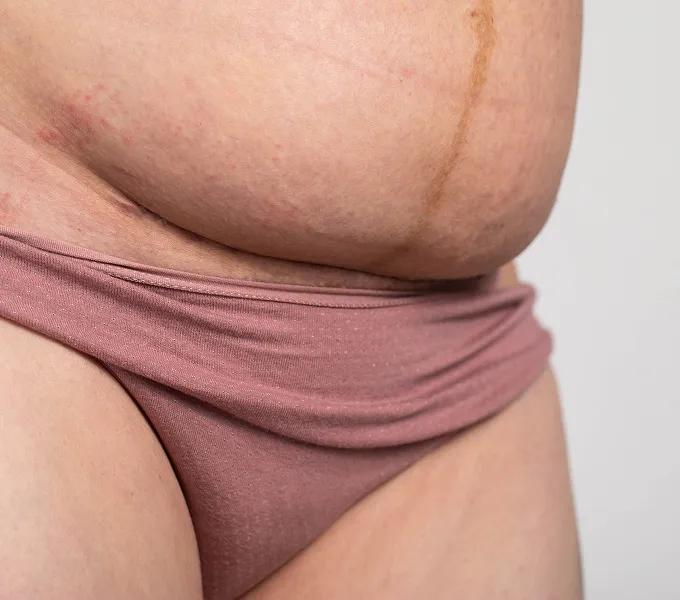
7 Ways to Prevent Pain & Strain While You Pump
Of all the uncomfortable, time-consuming, fussy aspects of caring for a baby, pumping is probably everyone's least favorite. There's the clunky gear to lug around, the struggle to find a place to pump, the wear and tear on your nipples, not to mention worries about low milk production or, gah, spilling any of the precious stuff.
With all of that on your mind, it's common to never consider how you're positioning your body as you pump.
We're here to tell you that spending just a little time on proper body mechanics can make this labor of love more comfortable and less likely to lead to strain and injury. The tips below come straight from our physical therapists. Use them to take care of your body — which deserves to feel good, even when you're hooked up to a milk-sucking machine.
1. Keep everything within reach.
Leaning and reaching while you pump will add up over time and strain your body. No matter where you are, start by collecting everything you need and placing it within arm's reach before you clamp on those flanges. That includes pumping supplies, water and a snack, and whatever else you need to multitask.
When traveling and out in public, your ability to do this can really depend on your bag. A few things to look for:
- Feet that keep the bag off of a dirty floor or wet counter.
- Zippers that open down the sides for easy access.
- A built-in cooler section for your milk and an ice pack.
- Separate pockets for all the things you grab the most.
- A strap that allows the bag to hang securely from a door hook or the back of a chair.
If you like having lots of room to spread out, consider packing a large changing pad and sanitizing wipes to create a clean surface.
2. Sit in a supported position.
Once you have your pump going, sit up tall with your chest open and both feet flat on the floor. If your feet don't reach the floor, try to find something (anything) to prop them on. Whenever possible, support your back with pillows or a rolled-up sweater or jacket, so you can rest.
If you have low back or tailbone pain, it's even more important to support your low back (it may help to put a small rolled-up towel at your low back, in addition to a pillow). Or consider sitting on a pressure relief pillow, like a wedged cushion with a coccyx cutout (different from a donut pillow, which typically doesn't provide as much relief).
3. Avoid constant downward gazing.
When you pump, it's normal to spend an enormous amount of time gazing down to check your flanges, see how much milk is coming out, or stare at your phone or laptop. This can put enormous strain on your neck. As often as you can, take breaks to look forward and bring your ears back over your shoulders.
Typically stare down at your phone while pumping? Try these tips:
- Place pillows or a rolled-up jacket on one armrest of your chair, under your elbow, so you can easily hold your phone at eye level.
- Make space in your bag for a portable phone stand with a flexible neck and clamp on the end.
- If you can't bring your phone to eye level, lean your head back onto pillows, then tilt your chin down (instead of leaning your neck and head forward). That way your neck muscles don't have to work so hard to support your head.
For more info about giving your neck a break, plus exercises to ease postpartum neck pain, check out this helpful post.
4. Buy (or make) a hands-free pumping bra.
Look into buying a pumping bra designed for your pump. This will help keep your hands free and prevent tension from building in your arms and shoulders from holding the flanges in place.
If you're on a tight budget, you can also make your own pumping bra by cutting two small holes into a sports bra made of thick, stretchy fabric. Note that any bra you wear while lactating should fit comfortably but not squeeze your breasts, which can reduce milk supply.
Not wearing a pumping bra? If you have them, use pillows to prop up each forearm at a height that allows you to easily hold each flange in place.
5. Massage your forearms.
Even a minute of forearm massage can ease tension in your muscles, improve blood flow to healing tissues in your wrist and fingers, and reduce inflammation. Gently squeeze and massage the front, back, and sides of each forearm, from your elbow to your wrist.
The next time someone close to you asks if they can do anything to help? Ask them to massage your forearms.
6. Give your thumbs a break.
If you typically use your thumbs to text while pumping, try holding your phone in one hand and using the index finger of your other to type. This will help you rest your wrists and thumbs which can get overworked during childcare activities.
7. Think "Barbie hands" when expressing manually.
Manual milk expression is always tricky, and especially so if you have wrist and thumb pain. To take the strain off of your hands, consider using a two-handed technique, expressing one breast at a time (instead of the single-handed technique which requires you to use your thumb to express milk). While this technique isn't ideal if you are trying to collect the milk you are expressing (you really need that third mom hand we all wish we had, to hold a bottle to collect the milk), it can be really helpful for expressing milk into the sink or while you are in the shower to relieve engorgement.
With this technique, you'll use broad, flat hands while keeping your wrists in line with your forearms (think: Barbie hands). Place one palm on top of your breast and the other under your breast, and focus on using the larger muscles in your arms to press out milk.
For more personalized tips to make every aspect of baby care easier on your body, consider working with a postpartum physical therapist. We can help you learn about your body, prevent strain and injury, and address any pain you might be having.



